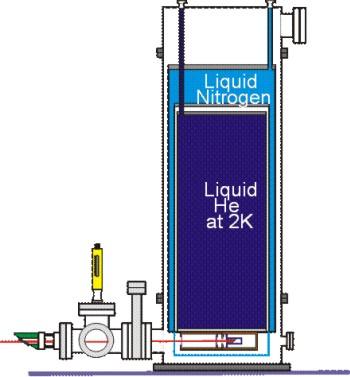Primary optical watt radiometer (POWR) facility

POWR is a cryogenic electrical substitution radiometer that serves as the Nation's optical power reference.
Specifications/Capabilities
- Uncertainty of 0.02 % (k=1) for power levels from 1 microwatt to 1 mW.
- Periodic shuttering with active cavity, feed-forward, and phase-sensitive detection.
- Optional 2-Kelvin operational temperature mode for greater sensitivity compared with the standard 4.2-Kelvin operational temperature.
- Continuous spectral coverage possible at the primary standard using tunable lasers from the adjacent SIRCUS facilities.
- Extended IR coverage and UV coverage using the primary standard.
- Possibility for windowless transfer from the primary standard, decreasing transfer uncertainties.
- Horizontal optical path eliminates the need for turning mirror, and provides more space for larger transfer detectors to be calibrated.
- Beyond radiant power, irradiance measurements using the POWR facility are conceivable.
- Captures future, unknown primary standard requirements through modular design.
- 2-weeks between liquid helium transfers, even when operating at 2 K temperature.
Internal intercomparison:
Optical power measurements on POWR were compared with two other absolute cryogenic radiometers at NIST:
- LOCR (Laser-Optimized Cryogenic Radiometer) located in NIST Boulder.
- A portable ACR located in the NIST SIRCUS facility.
The spectral power responsivity of two trap detectors measured at 488 nm, 514 nm, and 633 nm with the two cryogenic radiometers agreed to within ±0.02 %, comparable to the uncertainties of these radiometers.
Created September 18, 2009, Updated April 23, 2025

